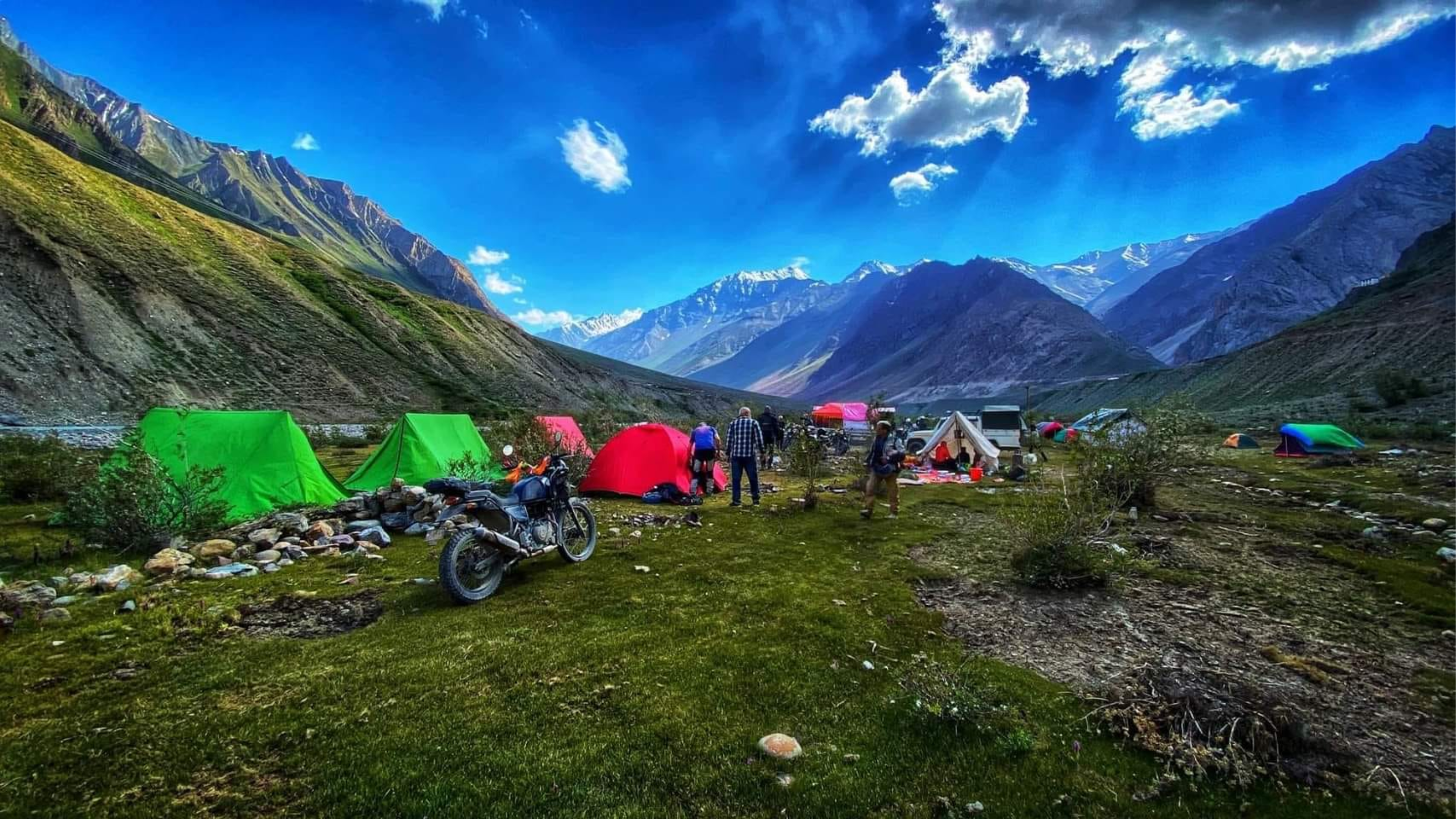Embarking on a motorcycle journey through the majestic Himalayas is an adventure of a lifetime, and what better way to immortalize the breathtaking landscapes and unique experiences than through the lens of your camera?
The Himalayas offer a visual feast for any photographer, with their towering peaks, serene valleys, vibrant cultures, and challenging terrains. Photography tips tailored for those traversing the Himalayan landscape on two wheels, ensuring you capture the essence and beauty of this awe-inspiring region.
Gear Up: The Right Photography Equipment
Before hitting the winding roads of the Himalayas, it’s crucial to ensure you have the right gear to capture the beauty that awaits. Consider the following essentials:
- Camera: While a high-end DSLR is ideal, don’t underestimate the power of a good quality smartphone camera. It’s lightweight, easily accessible, and can produce stunning images.
- Lenses: Pack versatile lenses to adapt to different scenarios. A wide-angle lens is essential for capturing expansive landscapes, while a zoom lens can help you get up close to distant subjects.
- Tripod: A sturdy tripod is a must for those early morning or late evening shots, as well as for capturing long-exposure images of waterfalls or starlit skies.
- Drone: If you have the means, a drone can provide a unique perspective of the Himalayan terrain. Check local regulations and restrictions before flying.
- Protective Gear: Ensure your gear is well-protected from the elements with weather-sealed bags and covers. The Himalayas can be unpredictable, so waterproof and dustproof covers are a wise investment.
Timing is Everything: Golden Hours and Seasons
The Himalayas undergo dramatic transformations throughout the day, making it essential to master the art of timing. The golden hours – the first hour after sunrise and the last hour before sunset – bathe the landscape in warm, soft light, casting long shadows and enhancing the overall appeal of your photographs.
Additionally, consider the season when planning your journey. Different seasons offer unique photographic opportunities. Spring brings blooming rhododendrons and vibrant colors, while winter blankets the mountains in snow, creating a pristine and magical atmosphere. Monsoon, on the other hand, adds drama with moody clouds and lush greenery.
Embrace the Landscape: Composition Techniques
The Himalayas demand a keen eye for composition to truly capture their grandeur. Here are some composition techniques to elevate your photography:
- Leading Lines: Use the natural lines of the landscape – be it winding roads, riverbanks, or mountain ridges – to draw the viewer’s eye into the frame.
- Foreground Elements: Incorporate interesting foreground elements to add depth and perspective. This could be a wildflower, a boulder, or even your motorcycle.
- Rule of Thirds: Divide your frame into a 3×3 grid and position key elements along the intersecting lines. This simple rule can add balance and interest to your shots.
- Frame within a Frame: Use natural elements like overhanging branches or archways to frame your subject, creating a sense of depth and focus.
Capture Local Life: People and Culture
The Himalayas are not just about breathtaking landscapes; they are also home to diverse cultures and warm communities. Capture the essence of your journey by photographing the people you encounter along the way.
However, it’s crucial to approach this with sensitivity and respect for local customs and privacy. Ask for permission before taking portraits and engage with the locals to capture candid moments that reflect the rich tapestry of life in the Himalayas.
- Portraits: Focus on the eyes to convey emotions, and use a wide aperture to create a beautiful bokeh effect, separating your subject from the background.
- Candid Moments: Keep your camera easily accessible to capture spontaneous moments. Whether it’s a market scene, a traditional ceremony, or a simple interaction, these shots can tell powerful stories.
- Festivals and Events: If your journey coincides with a local festival or event, immerse yourself in the celebration and capture the vibrant colors and traditions.
Weathering the Elements: Tips for Challenging Conditions
The Himalayan weather can be unpredictable, presenting both challenges and opportunities for photographers. Here are some tips to navigate various weather conditions:
- Rain and Snow: Invest in weather-sealed camera gear and carry waterproof covers. Rain and snow can add drama to your shots, so don’t shy away from capturing the landscape during these weather events.
- Mist and Fog: Embrace the atmospheric effects of mist and fog. These elements can add a sense of mystery and scale to your images. Use a lens hood to protect against water droplets.
- Harsh Sunlight: In high altitudes, the sun can be intense. Use a lens hood to reduce lens flare, and consider shooting in the softer light of early morning or late afternoon.
- Altitude Challenges: High altitudes can affect both you and your equipment. Acclimatize slowly to avoid altitude sickness, and be mindful of your camera’s battery life, which can deplete faster in cold conditions.
Storytelling through Your Lens: Sequencing and Series
Instead of capturing isolated shots, consider creating a visual narrative by sequencing your photographs. This can be particularly impactful for documenting a long journey through the Himalayas.
Tell a story through your images, showcasing the diverse landscapes, the challenges faced, and the triumphs experienced. A well-organized series of photographs can engage viewers and provide a more immersive experience of your adventure.
Conclusion
A motorcycle journey through the Himalayas is not just about conquering challenging terrains; it’s about immersing yourself in the awe-inspiring beauty of the region.
Through thoughtful planning, a keen eye for composition, and an understanding of your equipment, you can capture moments that not only reflect the grandeur of the landscape but also the spirit of your journey.
So, gear up, hit the road, and let your lens be the storyteller of your Himalayan motorcycle adventure tour.
